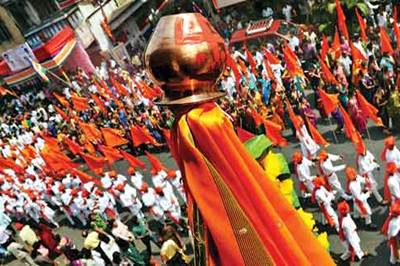Gudi Padwa, a traditional springtime Marathi festival is celebrated on the first day of Chaitra month and hence is also known as the New year for Marathi’s. It is widely celebrated in and around Maharastra. In Sanskriadwa is referred to as the first day of a lunar fortnight.
The festival is mainly celebrated with rangoli, a gudhi flag which is garlanded with flowers, mango and neem leaves topped with upturned silver or copper vessel, street processions, dances and festive foods. It is also celebrated during the reaping time of Rabi crops.
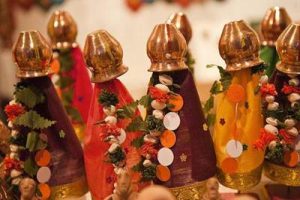
Mythologically, it is believed that this was the time when Hindu god Brahma created time and universe. Also, the coronation of Lord Rama in Ayodhya is said to have taken place at the same time which gave rise to the start of the shalivahan calendar and the defeat of huns dynasty in the first century. Also in rural Maharashtra, the festival is connected to Lord Shiva’s dance and get together of the community as they carry Gudhi Kavads to Shivas temple.
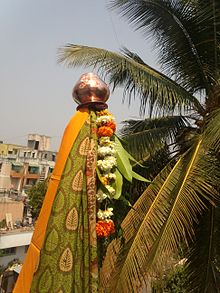
Hindus especially Telugu people celebrate the same occasion as Ugadi. Whereas Kannada and Konkan Hindus in Karnataka celebrate this festival as Yugadi. The same new year festival is called by different names and celebrated variedly but the prime purpose of this festival is celebrating the new year as per the Hindu tradition.
The Sindhi community celebrates their new year as Cheti Chand and prayers are offered to Lord Jholelaal. On this auspicious occasion, they prepare tehri (sweet rice) and Palak dal.
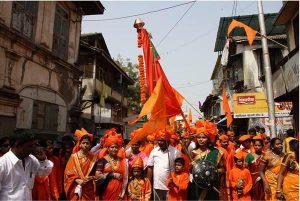
During the festival, we can find numerous gudhi arrangements at every household. Gudhi is a bright colorful silk scarf-like cloth tied at the top of a long bamboo. On its top one or more boughs of neem and mango leaves are attached along with a garland of flowers.
The whole arrangement is then capped with a silver, bronze or copper pot signifying victory or achievement and it is hoisted outside each household typically to the right side. It is made visible to everybody. Also, villages and neighborhoods also come together and host a community called Gudhi Kavad.
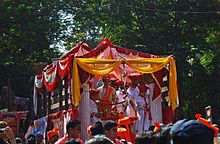
Significance of Gudhis are mentioned in varied ways and they are as follows:
It symbolizes the victory of King Shalivahana over sakas and was hoisted by his people when he returned to Paithan. As mentioned in the Brahma Purana, Gudhi symbolizes Brahma’s flag. It is also a symbol of victory of Lord Rama. Gudhi is believed to ward off evil, invite prosperity and good luck into the house.

On this festive day, courtyards in village houses will be swept clean and plastered with fresh cow-dung. Even in the city, people take the time out to do some spring cleaning. Women and children work on intricate rangoli designs on their doorsteps, the vibrant colours mirroring the burst of colour associated with spring. Everyone dresses up in new clothes and it is a time for family gatherings.

Traditionally, families prepare a special dish that mixes various flavors, particularly the bitter leaves of the neem tree and sweet jaggery. Additional ingredients include sour tamarind and astringent dhane seeds. This, like the pacchadi recipe used in Ugadi festival, is eaten as a reminder of life’s sweet and bitter experiences, as well as a belief that the neem-based mixture has health benefits. Maharashtrian families also make many other festive dishes, such as Shrikand and Poori or Puran poli on this day.

